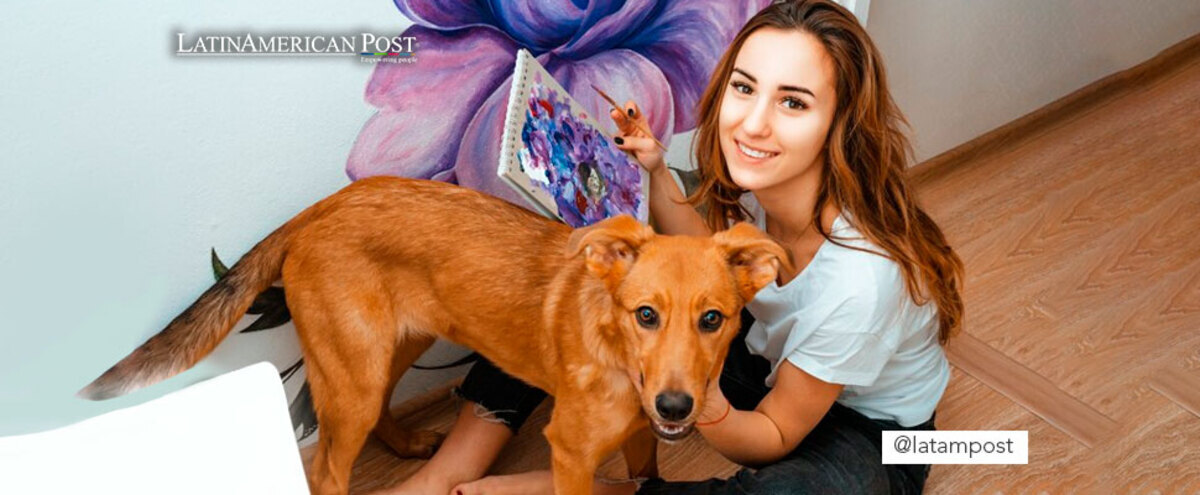Emotional support animals make their way into the field of mental health
At present, the incorporation of animals in the different areas of study and therapeutic treatments of mental health is arousing more and more interest in the scientific community.

Photo: Freepik
LatinAmerican Post | Erika Benitez
Listen to this article
Leer en español: Los animales de apoyo emocional se abren camino en el campo de la salud mental
Numerous studies and investigations show the great benefits that interaction with animals has for people's health, for example, for those who suffer from eating disorders, anxiety, addictions, grief, depression, Alzheimer's, and in the elderly or palliative care. For this reason, "Animal Assisted Therapies" (AAT) or emotional support animals are becoming more common. An area other than trained assistance or service dogs, for example, to guide blind people.
Human beings have always generated not only strong socio-affective ties with animals but have also made use of their abilities and skills for various purposes, such as means of transportation, entertainment, protection of the home and territory, cult symbols, guides for people with functional diversity, etc. Hence, the great potential for the interaction and company of animals.
Dogs are the most common species in these interventions, essentially due to the variety of breeds, docile temperament, and ease of training. Along with them, some farm animals, horses, cats, and dolphins are included. The important thing, in this sense, is to establish which of them is the most suitable for treating the particular physical or psychological functions of each patient.
Animal Assisted Therapy
According to a study called "Animal Assisted Therapy (AAT) and its application in hospital centers", carried out by the Matía Foundation, this type of treatment focuses on four main areas: physical, cognitive (for memory and learning processes ), the emotional (aimed at improving emotional expression) and the relational (which has to do with interpersonal relationships and the promotion of social behavior).
Regarding dog-assisted therapy, it is a technique that is based on direct contact with trained dogs, which are part of therapeutic programs with defined objectives and with which the participation of patients in different sensory activities is intended. perceptive. Canines have a great ability to interpret people's emotions, create a strong emotional bond with humans, and have friendly and easy-to-handle behavior, which is why, without a doubt, they are a good choice as therapeutic animals.
Another study published in the Scientific Magazine of the Official College of Nursing of Madrid on "Animal-assisted therapy in patients with autism spectrum disorder", showed that this type of animal therapy, particularly dog-assisted, provides mechanisms and tools to improve forms of relationships and social behavior. In fact, Autism Spectrum Disorder is one of the areas where interventions with animals have been most successful.
On the other hand, there are therapies carried out with horses, which use equines to treat people suffering from movement disorders, associated with neurological and neuromuscular conditions. Now, it is important to clarify that there is not a specific animal for each treatment, nor are all animals suitable for therapy. An essential part of the process requires the skill of the health professional, who knows how to guide the animal to achieve certain goals. What is certain is that there are some animals with which it is easier to work on some topics or others.
Some limitations or inconveniences of the process have to do with patients who cannot or do not want to establish that necessary bond with animals, or when they have allergies to them. In these events, the TAAs do not achieve their objectives and it is not possible to measure the results. Also, there are many regulatory gaps on how animals should be handled in healthcare settings. In some countries, such as the United States or Canada, access to pets or emotional support at health centers is allowed. In fact, several institutions maintain that it helps hospitalized people improve much faster. However, in most countries, there is still no protocol to allow animals access to hospitals.
We recommend you read: How to travel by plane with pets?: These are some recommendations
emotional support animals
For a few years now, people have been talking about emotional support animals, not only dogs but also pigs, hamsters, and even some birds. These animals are considered necessary for the mental health of their owner, that is, in cases of panic disorder, post-traumatic stress, anxiety, depression, or social phobia. For a dog (for example), to be recognized as an emotional support animal, it must be prescribed by a mental health specialist, who will determine if the company of the animal is essential for the well-being of the patient's daily life.
The difference with assistance dogs is that they must be specially trained to help people with some type of disability or disorder, while emotional support dogs do not need specialized training and can be of any species or breed.
Its use has become increasingly popular in public transport and on airplanes. In order for a person to travel with their faithful companion, they must present the documentation that certifies that the company of their pet is necessary, such as emotional support, and other documents on the state of health of the pet, depending on the policies of each airline. and regulations in the countries of origin and destination. Thus, in order for a dog to accompany its owner in the aircraft cabin, in addition to the required documentation, it must remain seated, in front of the assigned seat and cannot take up space in the aisles. Throughout the flight, they must maintain proper behavior.
Despite the progress made in the matter, the need for more research and studies that implement a more rigorous methodology, with more conclusive results and more specific indicators, for effective professional practice is recognized. All this, always respecting the integrity of the animal, because animals are not a simple resource of therapy, they are an integral part of it and, therefore, it is necessary to always make them visible as living beings that feel and are deserving of a series of rights. that must be respected within the interventions in which they participate.




